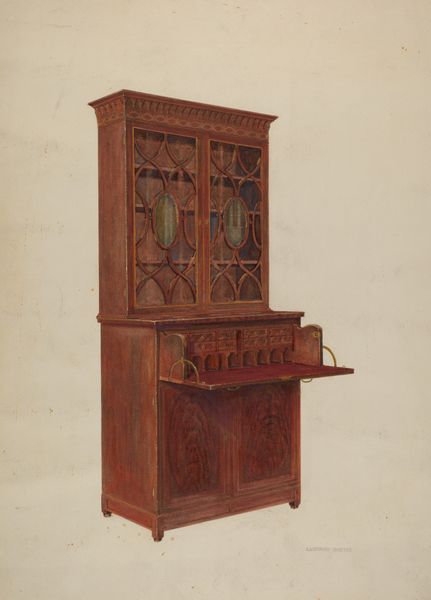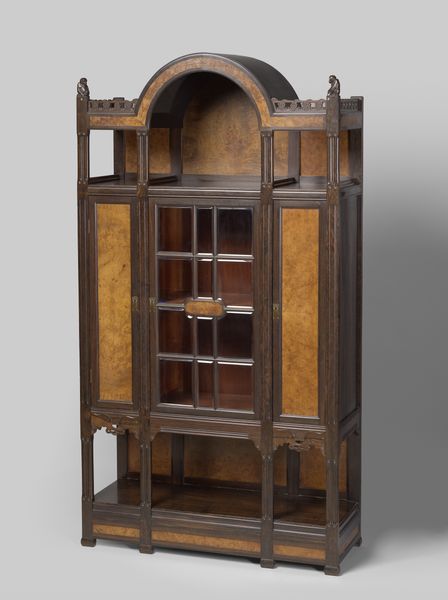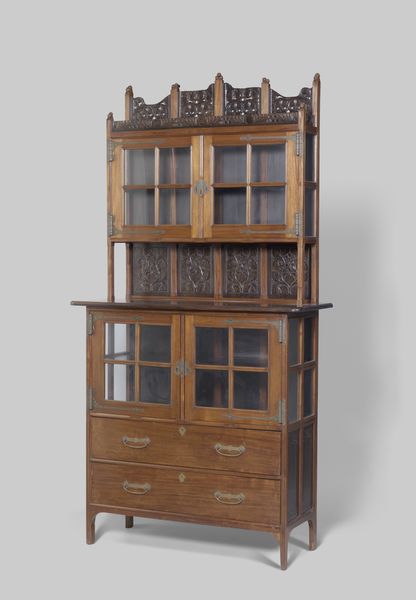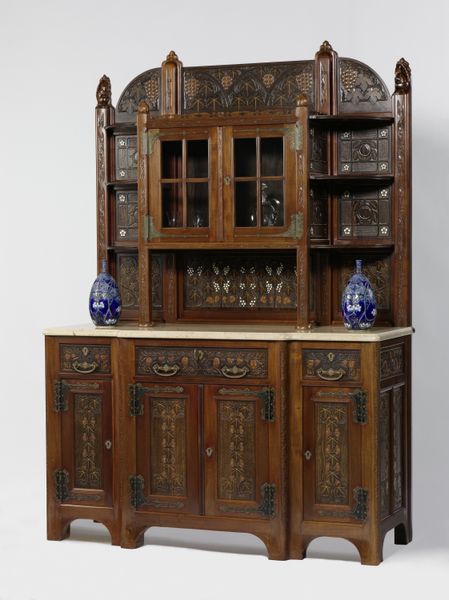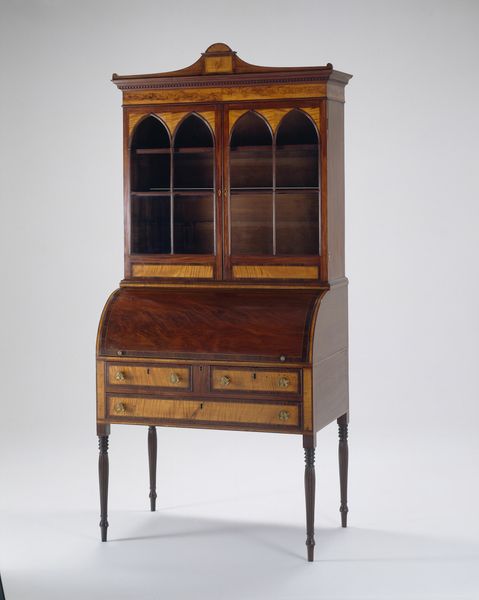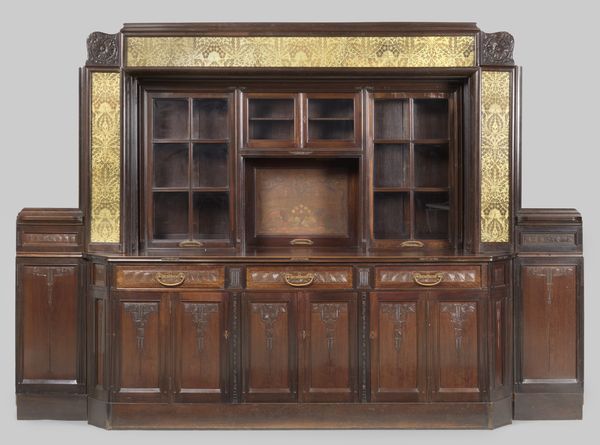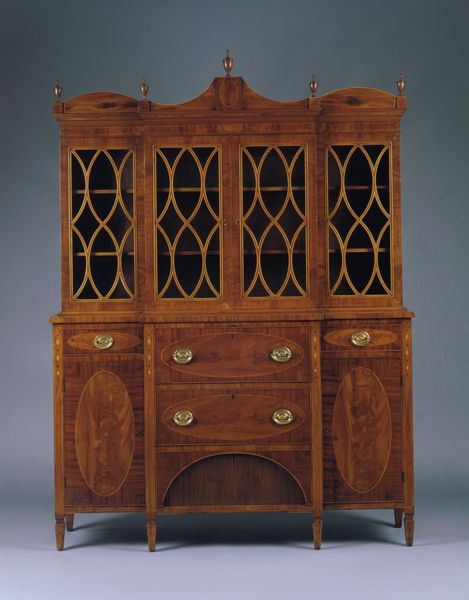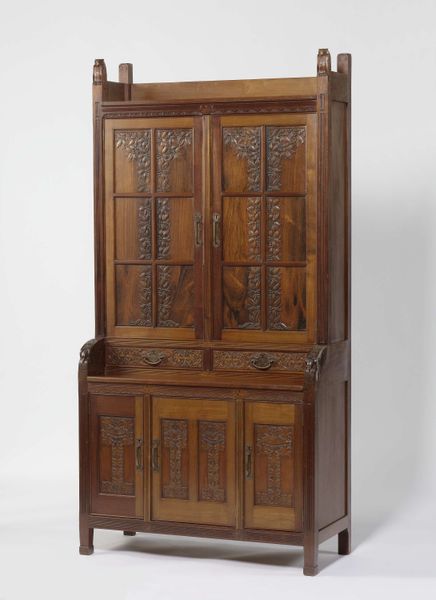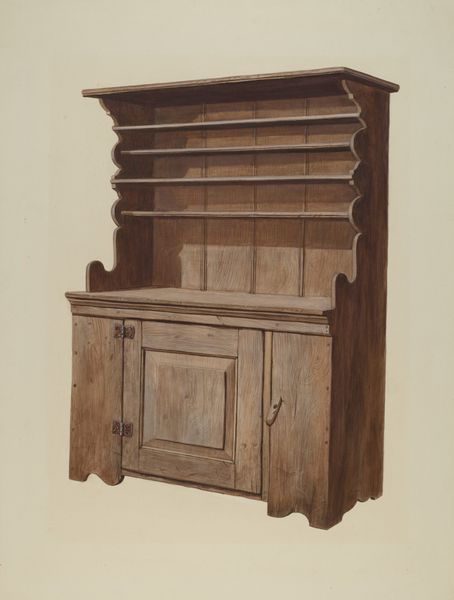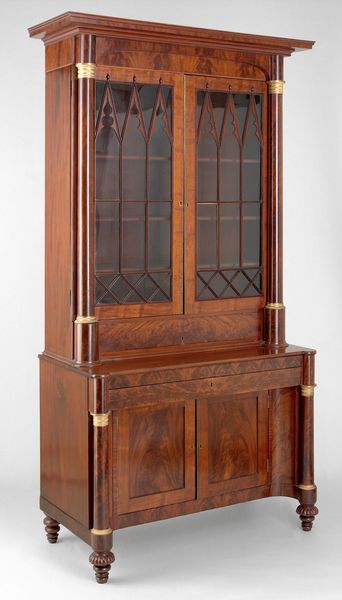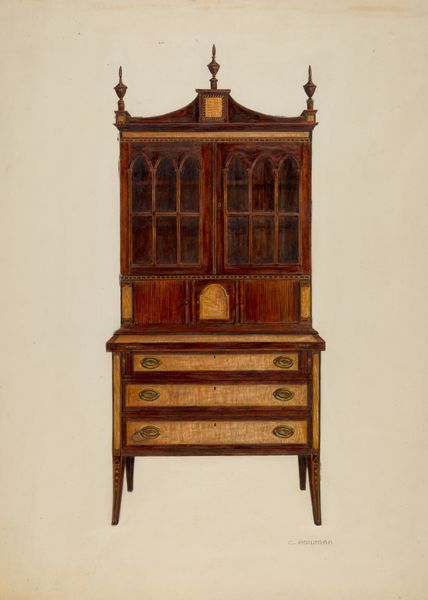
Buffetkast bestaande uit een onderkast en bovenkast met vitrinekast 1902
0:00
0:00
hendrikpetrusberlage
Rijksmuseum
wood, architecture
#
arts-&-crafts-movement
#
wood
#
architecture
Dimensions: height 215.0 cm, width 137.0 cm, depth 85.0 cm, weight 118 kg
Copyright: Rijks Museum: Open Domain
Curator: Oh, it exudes such warmth, doesn't it? Like a gentle hug from a grandparent. Editor: Precisely. That's probably owing to the dominant verticals meeting right angles throughout, along with the amber tones that pervade it, like honey trapped in wood grain. I'd like to introduce "Buffetkast bestaande uit een onderkast en bovenkast met vitrinekast," a 1902 construction by Hendrik Petrus Berlage, currently held at the Rijksmuseum. Its chief component is wood. Curator: "Buffetkast." I love the old-fashioned ring of that word. What we might call a sideboard or cupboard today. There's something comforting in seeing this—this...sturdy presence. Did Berlage intend a sense of grounding, of hearth and home? Editor: Berlage was deeply invested in rational design and material honesty. One sees this immediately in the unadorned surfaces, and a structure led entirely by rectangular geometry and clear symmetries. Note how he exposes the joinery as both a structural element and a decorative feature— a tenet of the Arts and Crafts movement, to which he pledged allegiance. Curator: I detect echoes of that movement—an integrity in its making, a celebration of craft against industrial uniformity. Yet the cabinet isn't fussy or overly embellished. Editor: Indeed. While aligned with Arts and Crafts, Berlage avoided excessive ornamentation, striving instead for a visual simplicity through geometric organization and modular elements, as is clear when scanning his use of regularly repeated small window panes that dominate the center of the work. It brings clarity rather than clutter. Curator: It’s funny. The rationality you pinpoint creates, for me, a sense of serene monumentality. Even homely touches, the gentle curves cut into the wood, can't hide the underlying form’s commanding stillness. I can envision this buffetkast standing sentinel in a room for decades. Editor: What endures here is Berlage's success in melding functional design with high artistic vision. In isolating and perfecting the essential geometric structure of utilitarian furniture he’s transformed what could be simply banal into an artifact that transcends period and genre. Curator: Agreed. Its functional essence becomes a source of genuine beauty, radiating quiet, confident strength, even now, over a century later. Editor: Its strength, for me, lies primarily in how this visual reduction is, ironically, capable of prompting endless compositional considerations and possibilities. It has this potentiality baked into it.
Comments
No comments
Be the first to comment and join the conversation on the ultimate creative platform.
